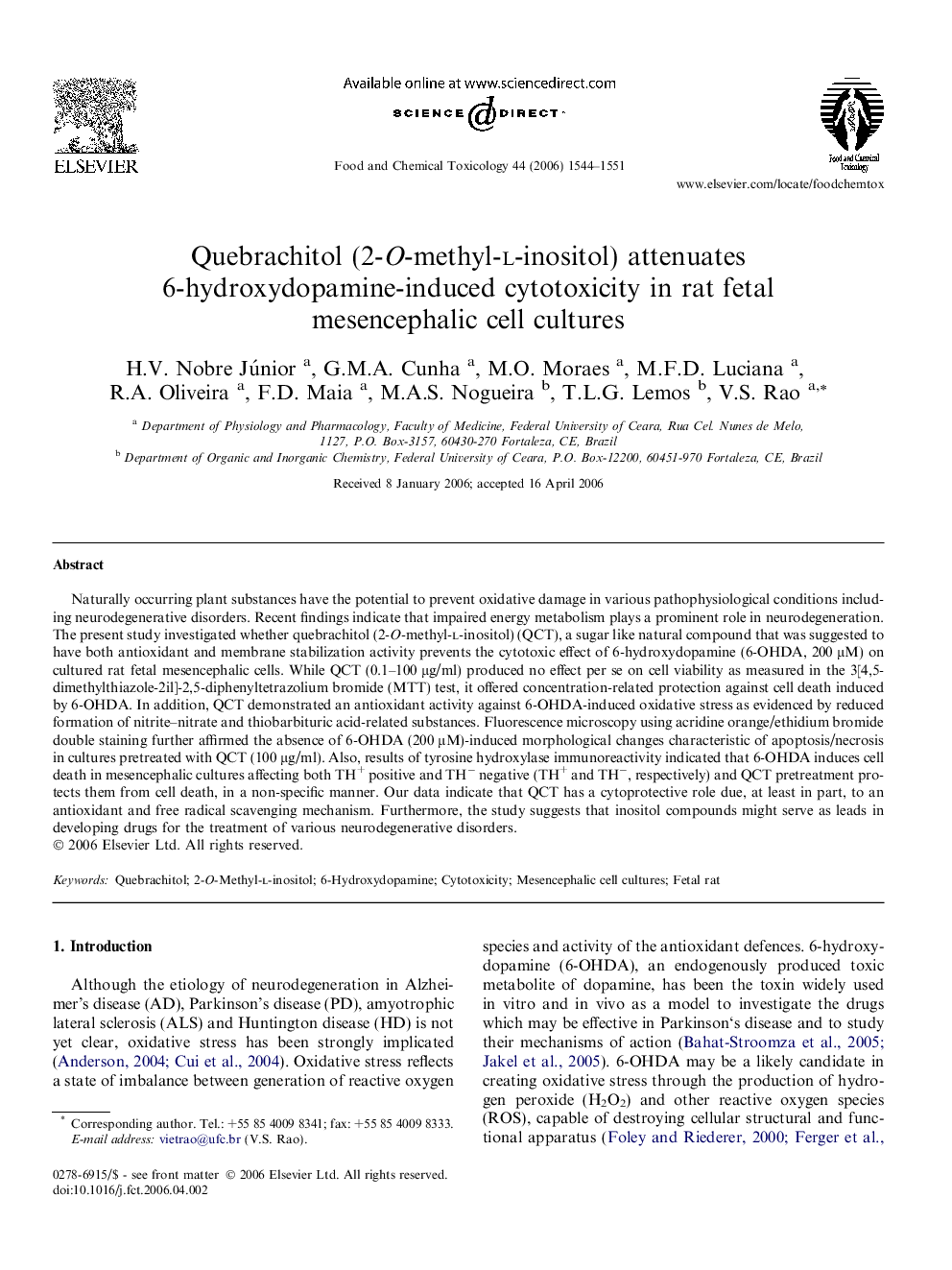| کد مقاله | کد نشریه | سال انتشار | مقاله انگلیسی | نسخه تمام متن |
|---|---|---|---|---|
| 2588330 | 1130965 | 2006 | 8 صفحه PDF | دانلود رایگان |

Naturally occurring plant substances have the potential to prevent oxidative damage in various pathophysiological conditions including neurodegenerative disorders. Recent findings indicate that impaired energy metabolism plays a prominent role in neurodegeneration. The present study investigated whether quebrachitol (2-O-methyl-l-inositol) (QCT), a sugar like natural compound that was suggested to have both antioxidant and membrane stabilization activity prevents the cytotoxic effect of 6-hydroxydopamine (6-OHDA, 200 μM) on cultured rat fetal mesencephalic cells. While QCT (0.1–100 μg/ml) produced no effect per se on cell viability as measured in the 3[4,5-dimethylthiazole-2il]-2,5-diphenyltetrazolium bromide (MTT) test, it offered concentration-related protection against cell death induced by 6-OHDA. In addition, QCT demonstrated an antioxidant activity against 6-OHDA-induced oxidative stress as evidenced by reduced formation of nitrite–nitrate and thiobarbituric acid-related substances. Fluorescence microscopy using acridine orange/ethidium bromide double staining further affirmed the absence of 6-OHDA (200 μM)-induced morphological changes characteristic of apoptosis/necrosis in cultures pretreated with QCT (100 μg/ml). Also, results of tyrosine hydroxylase immunoreactivity indicated that 6-OHDA induces cell death in mesencephalic cultures affecting both TH+ positive and TH− negative (TH+ and TH−, respectively) and QCT pretreatment protects them from cell death, in a non-specific manner. Our data indicate that QCT has a cytoprotective role due, at least in part, to an antioxidant and free radical scavenging mechanism. Furthermore, the study suggests that inositol compounds might serve as leads in developing drugs for the treatment of various neurodegenerative disorders.
Journal: Food and Chemical Toxicology - Volume 44, Issue 9, September 2006, Pages 1544–1551